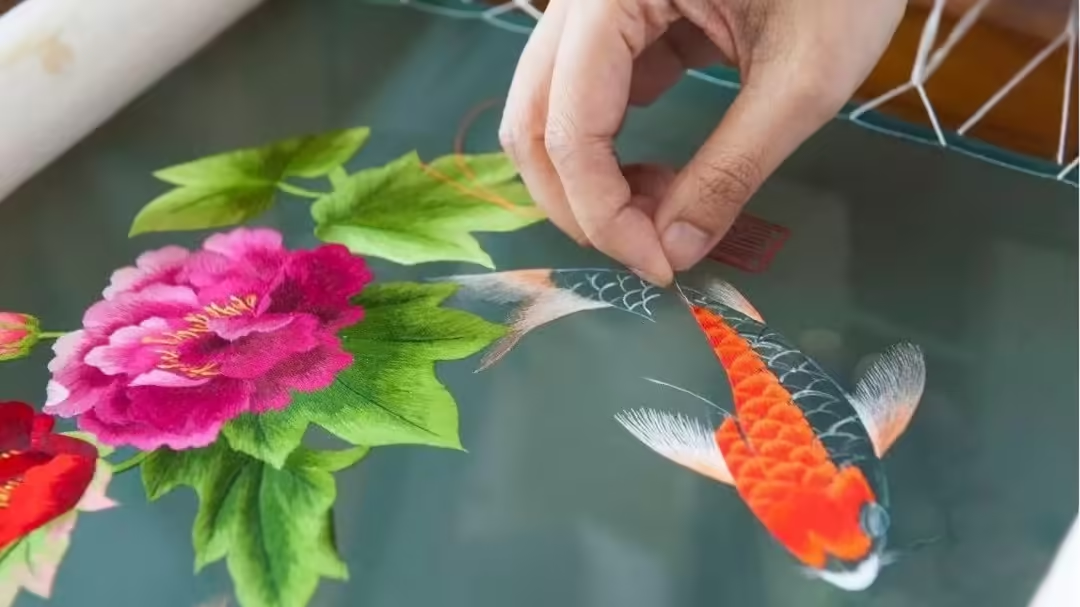Shu embroidery, also known as “Chuan embroidery,” originates from Chengdu and its surrounding regions in Sichuan Province. It is one of China’s Four Great Embroideries, alongside Su embroidery from Jiangsu, Xiang embroidery from Hunan, and Yue embroidery from Guangdong. This ancient craft boasts a rich history and is deeply intertwined with the cultural heritage of the region.
Historical Significance
The origins of Shu embroidery can be traced back to the fertile plains of Western Sichuan, where the ideal climate allowed for the abundant production of silk, the primary material for this craft. This natural advantage provided both the raw materials and the perfect environment for the flourishing of Shu embroidery. During the Shu Han period of the Three Kingdoms era, Shu embroidery played a crucial role in the local economy. It was frequently used as a trade item, exchanged for warhorses and other essential goods from the north. In this way, Shu embroidery became a significant economic pillar for the state of Shu.
The prominence of Shu embroidery is further evidenced by historical accounts from the late Tang Dynasty. When the Nanzhao Kingdom invaded Chengdu, they looted not only gold and silver but also considered Shu embroidery and its artisans as treasures of immense value. This reflects the high esteem in which Shu embroidery was held across China. In ancient Chengdu, embroidery was a vital skill for women, who were often sent to workshops from a young age to master the intricate techniques. Their childhoods were spent perfecting the art, turning white silk and fine needles into masterpieces under the misty rain.
Characteristics and Techniques
Shu embroidery is distinguished by its use of soft satin and colorful silk threads. The most famous traditional designs include the “Furong Carp” (Lotus Carp) and dragon and phoenix motifs, which are often seen on embroidered quilt covers. Notable works of Shu embroidery include the “Jiuzhaigou Panda,” “Peonies and Flying Butterflies,” “Three Carps and Waterweeds,” “Hundred Birds Paying Homage to the Phoenix,” “Pandas,” and “Pine and Cranes in Spring,” among others. These works often feature themes of prosperity, happiness, and good fortune, reflecting the vibrant and auspicious nature of folk art.
Today, Shu embroidery encompasses 12 major categories and 122 different stitching techniques, showcasing the craft’s diversity and adaptability. The techniques of Shu embroidery are akin to painting with needles, where threads replace ink, allowing for a rich variety of expressive styles. The themes range from fish and animals to portraits and flowers, making Shu embroidery a unique and significant form of Chinese needlework.
Cultural Legacy
The craft of Shu embroidery continues to be a symbol of Chengdu’s rich cultural heritage. Its intricate designs and exquisite craftsmanship are not only a testament to the skill of the artisans but also a reflection of the region’s deep historical roots. Whether depicted on mirror curtains, wedding dresses, scrolls, shoes, hats, skirts, pillowcases, quilt covers, or drapes, the vibrant and colorful patterns of Shu embroidery bring a sense of tradition and beauty to everyday life.

